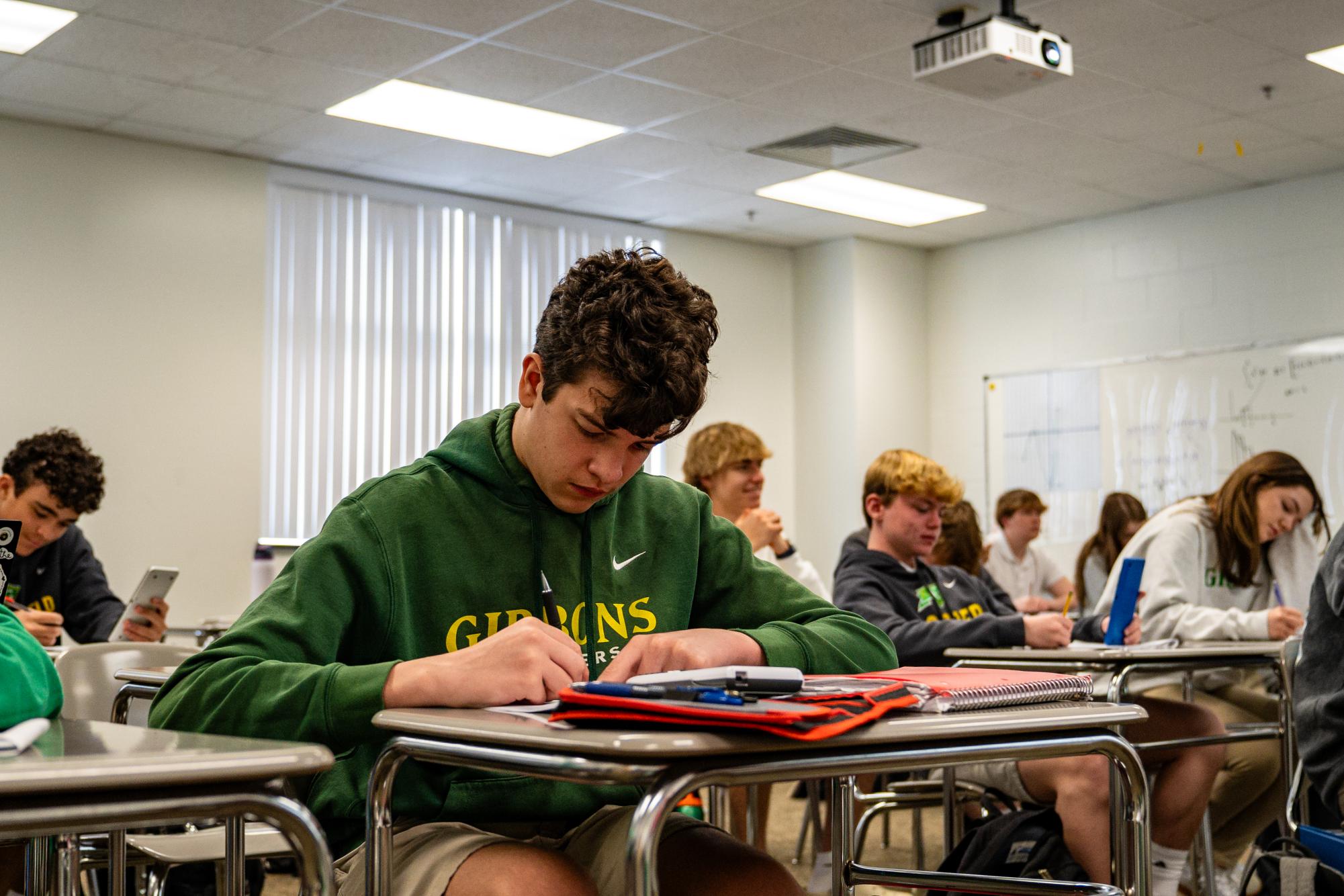Despite the wishes of some students to move back to waivers, placement tests returned for the second year at Cardinal Gibbons.
Since the implementation of these tests, staff at Cardinal Gibbons have seen a great decline in the amount of course change requests and schedule changes made.
First introduced last year, these exams served as a way to test students’ readiness for a higher level class and to determine which type of class they would be most likely to succeed in. Those who do not meet the prerequisites for a course they wish to take are now required to take a placement test, as opposed to just filling out a signed waiver with teacher approval.
While students may not love these new tests, they serve a necessary role in ensuring that all pupils are as prepared as possible for their course load the following year.
The Return of Placement Tests
In their first year in use, placement tests served as a vital component in helping students decide what classes were the best fit for them. During class registration for the 2025-2026 school year, these exams made an appearance once again to be another data point in the process of choosing classes.
But why did they return?
The answer becomes blatantly clear when comparing data from the 2023-2024 to this current school year.
According to Mrs. Barkan, Assistant Head of School for Academics, there was approximately a 60 percent decrease in the amount of course change requests and changes in student schedules. On top of that, there has been a 50 percent drop in the number of meetings, emails, and phone calls that Barkan and the college counseling staff have had to deal with regarding students who are struggling.
The frequency of these meetings has dropped from once a week to about 1-2 a month, a significant decrease showing just how effective these placement tests have been.
However, the most astounding statistic was the drop in course changes for ninth grade with a whopping 90 percent decrease in their requested schedule adjustments.
While some may wish they do not have to take these tests, these exams often save students from struggling with classes they are unprepared for and potentially having to switch their whole schedules around to accommodate.
With the way that students have been performing this year compared to those in the past, it is not surprising that these tests are likely here to stay.
Changes Made
However, as with any newly implemented program, the staff take in a variety of factors and opinions to optimize the process. Even just from last year there have been significant changes made to both the tests and how they were administered. These were made in response to both student and staff feedback.
Firstly, placement tests were offered in a more accessible manner this year, with availability to take them both before and after school.
The tests were conducted on six different dates occurring before the course registration deadline, while two extra dates were provided in March and April for special circumstances. Additionally, teachers were not permitted to give tests during this time to ensure that students had the necessary time to study for these placement exams and give them the best chance of passing.
Last year, numerous students stressed how rushed they felt in the process, receiving the results of their placement tests and having only a couple days to finalize their course load for the next school year.
Therefore, this year the course registration period was extended an extra week to guarantee students time to talk with counselors, advisors, and parents about their decisions.
In terms of the tests themselves, most placement exams were only tweaked, but not majorly modified from last year. One notable revision was the addition of a Biology Honors section to the placement test for the incoming freshmen class, as well as alterations made to the English 9 Honors and Spanish 2 Honors exams.
The PSAT Score Discussion
One prerequisite that annoys students of all grades is the PSAT score requirement to place into higher level classes.
While frustrating, PSATs have been shown to be an indication of students’ success in higher level courses.
Some have found that despite having A’s in many of their classes, their PSAT score does not qualify them for most courses, requiring them to take multiple placement tests.
That changed this year though. Originally all students were required to take placement exams if they did not receive the necessary PSAT score. However, a couple days into the course registration period, the academic staff decided that students with an A or better could continue on to that same level class the next year regardless of their PSAT score.
This came to the relief of a great deal of students who no longer were required to take as many tests. However, many questioned why this decision was made so late.
Originally, Barkan had proposed that if a student had a B or better, they could be placed into the same level class the next year without the needed PSAT subscore.
However, several departments felt this was too low of a grade to ensure that students would be prepared for the next class. The idea was set aside and later re-visited with a higher requirement of an A or better to avoid the PSAT prerequisite.
Future Plans and Ending Remarks
While placement tests are here to stay for the foreseeable future, new modifications may be arriving in the coming years.
Unfortunately, first semester grades were not available to Barkan when deciding what grade to require to skip the PSAT requirement. However, this May, she will have the data and resources to see how students who had B’s last year, regardless of their PSAT, have performed in the same level class this year.
Barkan hopes that this will show that students with a B are able to maintain that grade in the same level class in subsequent years, allowing for the PSAT requirement to perhaps be further altered.
As far as ending remarks, Barkan emphasized that she is just trying to look out for the best interest of the students. Some people feel it is unfair for students to not have the opportunity to take classes if they really want to.
However, what they do not see, according to Barkan, “is the other side, which is the kid that is in classes where they’re over their heads. They’re stressing out. I have to change their schedule. It flips everything around. It creates unnecessary stress and anxiety that has an impact not only on that class, but on other classes.”
While she understands why these students and parents feel the way they do, Barkan is just trying to look out for them and their future in a way that is hard to convey through words.
As she said, “I am just trying to use data as opposed to feelings.”








